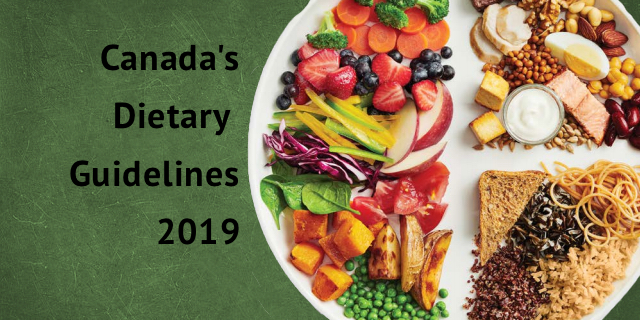“We receive a constant stream of changing (and often conflicting) messages on healthy eating. Food marketing is evolving rapidly, and now includes channels such as social media. This complex and crowded information environment can make it hard for Canadians to make healthy eating choices.”
 Canada has released its equivalent of the USDA Food Pyramid and Guidelines. Their document, “Canada’s dietary guidelines,” takes a bold and refreshing stand, explaining the impact of our “food environment” and of food marketing on food intake.
Canada has released its equivalent of the USDA Food Pyramid and Guidelines. Their document, “Canada’s dietary guidelines,” takes a bold and refreshing stand, explaining the impact of our “food environment” and of food marketing on food intake.
A person’s food environment is the food that is available in the home, at retail stores and at restaurants. In other words, the food that surrounds us. Food marketing is part of that environment. Companies, lobbying groups and other commercial interests provide messaging that influences our food choices.
Canada’s Guideline 1 states
- “Vegetables, fruit, whole grains, and protein foods should be consumed regularly.
- Among protein foods, consume plant-based more often.
- Protein foods include legumes, nuts, seeds, tofu, fortified soy beverage, fish, shellfish, eggs, poultry, lean red meat including wild game, lower fat milk, lower fat yogurts, lower fat kefir, and cheeses lower in fat and sodium.
- Foods that contain mostly unsaturated fat should replace foods that contain mostly
saturated fat.- Water should be the beverage of choice.”
The recommendations of plant-based proteins, rather than animal-based, indicates that lobbying by  powerful groups-like the beef industry-did not influence these guidelines.
powerful groups-like the beef industry-did not influence these guidelines.
“The term ‘highly processed products’ is used in this report to describe processed or prepared foods and beverages that contribute to excess sodium, free sugars, or saturated fat when consumed on a regular basis. This includes processed meat, deep-fried foods, sugary breakfast cereals, biscuits and cake, confectioneries, sugary drinks, and many ready-to-heat packaged dishes.”
In another example, USDA’s guidelines use the term “limit” saturated fats but Canada’s food guidelines clearly states these should be replaced with healthy fats. There is no “waffling” here. Fruit juice-a source of unnecessary calories and limited nutrition value-are not a substitute for fruit, as the USDA’s document states.
 Water as the go-to beverage suggests that this is a document based in science.
Water as the go-to beverage suggests that this is a document based in science.
The guidelines support traditional foods of indigenous peoples, recommending these to improve diet quality. Moreover, these recommendations acknowledge the effect of food choices on nature and global environment. The document describes how food waste increases landfill greenhouse gas emissions affecting global warming.
Mental health and dental health are both given prominence.





